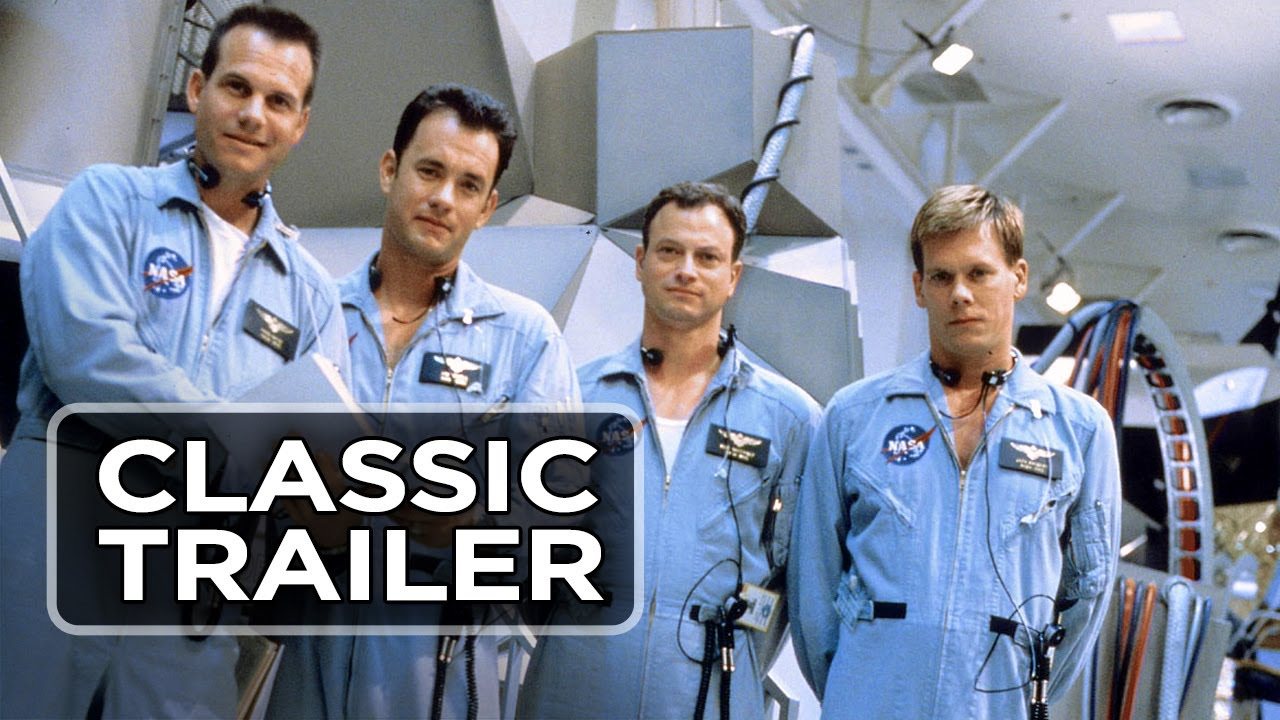Apollo 13 (1995)

Released in 1995 and directed by Ron Howard, “Apollo 13” is a historical drama film that chronicles the true story of the ill-fated Apollo 13 mission, a crucial episode in the history of space exploration. Starring Tom Hanks, Kevin Bacon, and Bill Paxton, the film captures the harrowing experience of the astronauts who faced life-threatening challenges in space and the ground crew’s relentless efforts to bring them back safely. The film is praised for its meticulous attention to detail, compelling narrative, and portrayal of human ingenuity under pressure. This essay explores the film’s narrative structure, thematic depth, technical achievements, and overall impact, highlighting why “Apollo 13” remains a powerful and inspiring portrayal of one of NASA’s most dramatic moments.

The film begins with the successful launch of Apollo 13, the third crewed mission intended to land on the Moon. However, the mission takes a dire turn when an oxygen tank explodes, severely damaging the spacecraft and jeopardizing the lives of astronauts Jim Lovell (Tom Hanks), Fred Haise (Bill Paxton), and Jack Swigert (Kevin Bacon). With their lunar landing plans dashed, the crew must navigate the challenges of returning to Earth safely with limited resources. Meanwhile, on the ground, NASA’s mission control team, led by Gene Kranz (Ed Harris), works tirelessly to devise solutions to the myriad problems faced by the astronauts. The film climaxes with the tense re-entry of the spacecraft and the eventual safe return of the crew to Earth.

“Apollo 13” explores themes of perseverance, teamwork, and the spirit of innovation in the face of adversity. The film’s narrative highlights the incredible resolve and ingenuity of both the astronauts and the NASA ground crew. The crisis-driven problem-solving showcased throughout the film serves as a testament to human resourcefulness and the ability to overcome seemingly insurmountable challenges.
The theme of teamwork is central to the film’s story. The successful resolution of the crisis is depicted as a collaborative effort between the astronauts, who must rely on each other to survive the perilous situation, and the NASA team, which works around the clock to devise a solution. The film portrays the synergy between these groups as crucial to overcoming the obstacles they face.
Another significant theme is the triumph of human spirit and ingenuity. The film demonstrates how creative thinking and determination can lead to extraordinary solutions. The famous scene where the mission control team devises a makeshift air filtration system using limited materials is a prime example of this theme, showcasing the resourcefulness and innovation required to solve complex problems under pressure.

“Apollo 13” is notable for its technical precision and authenticity, which contribute to its compelling storytelling. The film’s attention to detail is evident in its accurate depiction of spacecraft operations, space travel procedures, and the physical challenges faced by astronauts. The use of practical effects, including meticulously designed spacecraft interiors and realistic spaceflight simulations, enhances the film’s authenticity and immersion.
The cinematography by Dean Cundey is instrumental in creating the film’s tension and realism. The use of handheld cameras and tight framing effectively conveys the cramped and disorienting environment of space. The film’s visual style captures both the vastness of space and the claustrophobic conditions within the spacecraft, adding to the narrative’s intensity.
The film’s sound design and score, composed by James Horner, also play a crucial role in building suspense and emotional depth. The score combines elements of orchestral music with electronic sounds to create a sense of urgency and drama. The sound design enhances the realism of space travel, with the sounds of spacecraft systems, communication, and environmental conditions adding to the immersive experience.

Upon its release, “Apollo 13” received widespread critical acclaim and was praised for its gripping narrative, historical accuracy, and strong performances. The film was nominated for several Academy Awards, including Best Picture, Best Director, and Best Supporting Actor for Ed Harris. It won two Oscars for Best Film Editing and Best Sound.
The film’s impact extends beyond its immediate success, as it contributed to a renewed interest in space exploration and the achievements of NASA. “Apollo 13” is often cited as a landmark film in the genre of historical dramas and space exploration films, celebrated for its ability to blend dramatic storytelling with factual accuracy. Its portrayal of the Apollo 13 mission has been credited with educating audiences about the complexities of space travel and the human spirit’s capacity to overcome adversity.
In conclusion, “Apollo 13” (1995) stands as a powerful and inspiring film that masterfully blends historical accuracy with dramatic storytelling. Through its exploration of themes such as perseverance, teamwork, and innovation, the film provides a compelling portrayal of one of NASA’s most dramatic space missions. Its technical achievements in cinematography, sound design, and authentic depiction of space travel contribute to its effectiveness as a historical drama. As a testament to the courage and ingenuity of the individuals involved in the Apollo 13 mission, the film remains a significant and enduring work in the realm of cinematic portrayals of real-life events.











